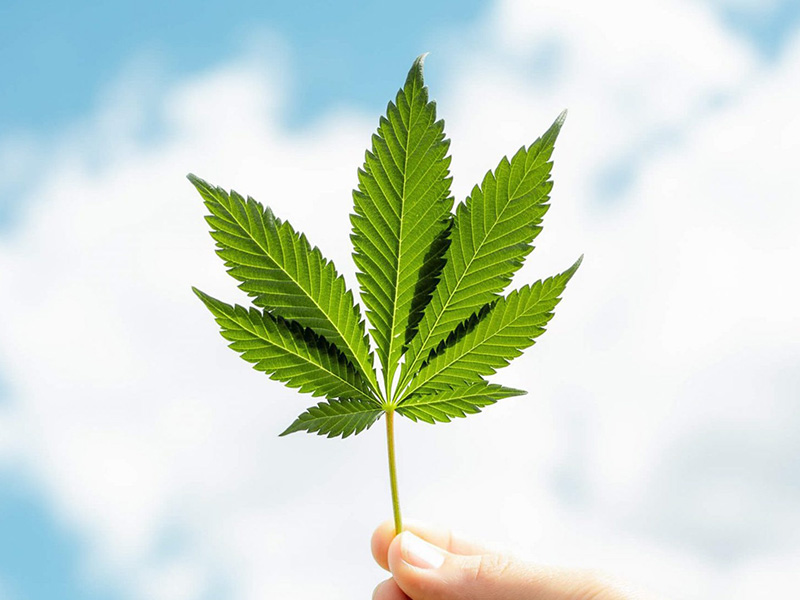Cannabis is becoming increasingly popular among recreational users. With this growing popularity, it's important to understand what types exist and what effects they have. The choice between Sativa and Indica can be challenging, as both types offer unique characteristics and benefits. In this blog, we explain the differences between Sativa and Indica, so you can make better informed choices.
What are Cannabis Strains?
Cannabis strains refer to the different varieties of the cannabis plant, each with specific characteristics and effects. The three main types are Sativa, Indica, and Hybrid. Sativa and Indica in particular are well-known and frequently used. Knowing the strain is essential to achieve the desired effects and make the right choice for your use. Hybrids are crosses between Sativa and Indica, which can have characteristics of both.
Origin and Plant Characteristics
Sativa strains originate from warm climates like South America, Southeast Asia, and Africa. These plants are tall, slender, and have narrow leaves. They can grow considerably tall, sometimes up to 3-4 meters when grown outdoors. The flowering period of Sativa plants is longer, often 10-16 weeks, which contributes to their height.
Indica strains come from cooler climates like the Hindu Kush region of India, Pakistan, and Afghanistan. They are shorter, bushier, and have broader leaves. Indica plants grow faster and often yield higher harvests than Sativa plants. The flowering period of Indica is shorter, usually 8-12 weeks, making them popular with growers who want quick harvests.
Genetic and Visual Differences
While there are no significant genetic differences between Sativa and Indica, they do show clear visual differences. These visual characteristics result in different terpene profiles, which contribute to their unique effects. Terpenes are aromatic compounds found in many plants, including cannabis. They influence the smell, taste, and potential effects of the cannabis strain. For example, myrcene, a terpene often found in Indica strains, is known for its calming properties. Sativa strains often contain limonene, which (as the name suggests) smells more citrusy and is known for its uplifting properties. It's basically like using a fresh shower gel in the morning!
Effects and Uses
Sativa strains are known for their uplifting and energetic effects. They are often used during the day and are ideal for social and physical activities, or creative pursuits, like making music. Typical effects of Sativa are a feeling of euphoria, increased focus, creativity, and a sense of alertness. These effects are caused by the interaction of higher THC levels and lower CBD levels.
Sativa is often chosen by people who need a mental boost or who want to stimulate their creativity. Common applications include relieving depression, fatigue, and ADHD symptoms. Sativa can also help reduce anxiety, although some people may actually become more anxious or even paranoid from the stimulating effect. This varies per person, situation, method of consumption, and dose.
Indica strains are known for their relaxing and calming effects. They are usually used in the evening or before bedtime due to their ability to promote physical relaxation and sleep. Typical effects of Indica are deep relaxation, drowsiness, a "body high" (the so-called couch lock effect, the idea that you're 'glued' to the couch), and reduction of pain and muscle tension. These effects are due to the interaction between higher CBD levels and lower THC levels.
Indica is a good choice for people looking for pain relief or who need help sleeping. It's often used to treat symptoms of chronic pain, insomnia, and anxiety. Indica strains can also help relieve muscle cramps and inflammation.
Choosing the Right Strain
Choosing the right strain depends on your desired effects, timing of use, and personal preferences. Think about what you want to achieve: do you want energy and creativity or relaxation and sleep? Look at descriptions of different strains and their effects to get a better idea of what suits you best. It's also a good idea to ask advice from a budtender or expert at your local shop. Especially if you're new to cannabis, it's wise to start with small doses and slowly work your way up. Also make sure you're in a trusted environment, and that the activity you want to undertake matches the strain you're going to consume. For this too, we recommend seeking advice from an expert.
Health Risks
While cannabis can offer many benefits, there are also some health risks you should be aware of. Long-term use can lead to addiction, although this risk is relatively low. High doses of THC can cause anxiety or paranoia in some people, which can affect mental health. Regular use, especially at a young age, can affect memory and concentration, which has consequences for cognitive function. Additionally, smoking cannabis can lead to respiratory irritation, although vaporizers and edibles are less harmful. By using cannabis responsibly and being aware of these potential risks, you can optimally enjoy the benefits.
